The tech that makes the new Trek Madone 20 watts faster
A look at the technology and aerodynamics that drives a 20 watt performance gain for the Gen 7 Trek Madone
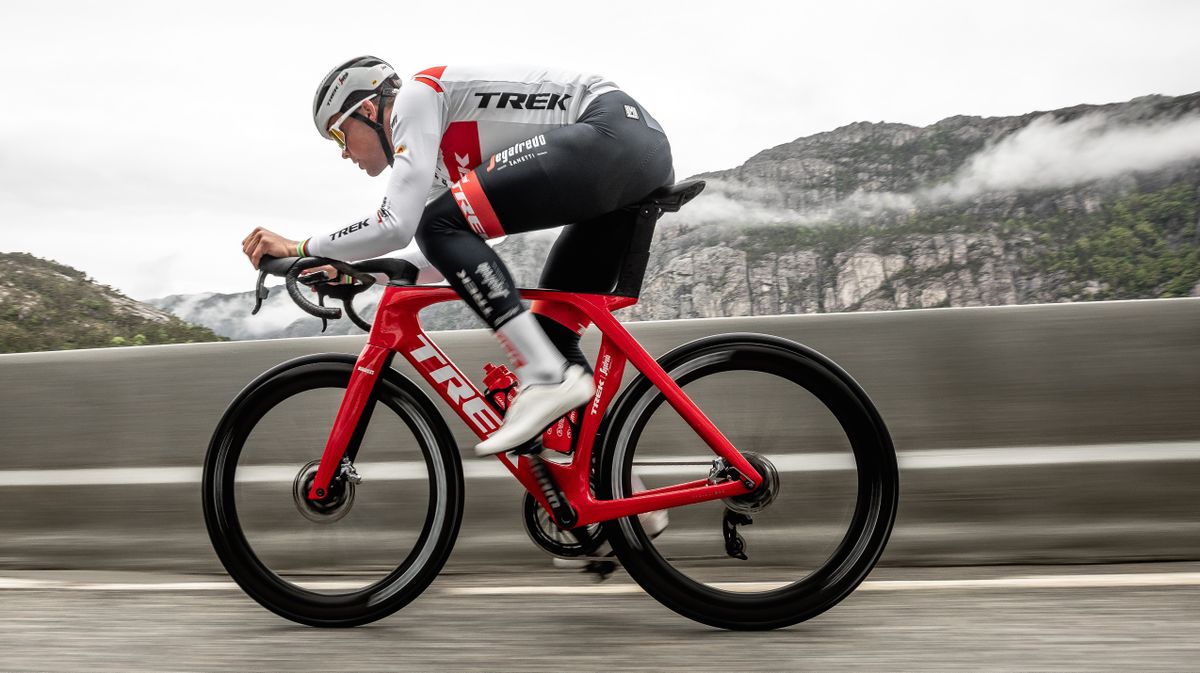
With the launch of the Gen 7 Madone, Trek Bikes has come up with some radical solutions to make its premier aero race bike even faster, while saving 300 grams of weight.
“All told, the new bike is around 60 seconds per hour faster than the previous model, including the rider,” says Jordan Roessingh, director of road bikes at Trek.
Although that’s measured at 45km/h, you get that gain regardless of how fast you’re riding; it’s pretty much the same time saving whether you’re riding at 45km/h, 35km/h or even 25km/h, Trek says.
“The new bike is almost 300 grams lighter than the previous Madone, so it’s also the lightest Madone Disc that we’ve ever made. We did all of this while still retaining the amazing ride quality of the Madone. It’s been one of the things that the platform has always been known for,” Roessingh continues.
Here’s how Trek has engineered the Gen 7 Madone to achieve these three objectives.
A brief history of the Trek Madone
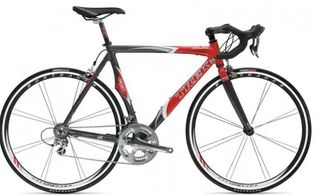
Trek has given the Madone name to its premier race bike ever since 2003 and Cyclingnews has covered every new iteration from 2004 (although those early bikes are now archived).
It was only in 2016 that the Madone got its characteristic deep aero tube profiles that we know today. That came as bicycle designers increasingly recognised the importance of aerodynamics and the weight penalty from aero tube profiles began to reduce. The 2016 bike also incorporated IsoSpeed to help isolate the rider from the road, while the 2018 bike was the first Madone to include adjustable IsoSpeed and add disc brakes.
Pro-level performance
The Madone has always been a pro-level bike and when Trek started to design the new Gen 7, it began by asking its Trek-Segafredo pros what they wanted from the new bike.
2019 World Champion Mads Pedersen won Stage 13 of the Tour de France on the Gen 7 Madone and has been closely involved in the development and testing of the new bike.
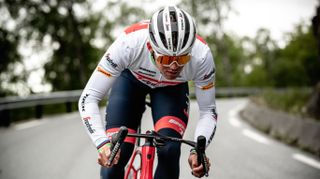
“The ideal race bike for professional cyclists is definitely something really aero and also light,” he says.
That meant that the pros asked for a solution that was lighter than the previous Madone’s adjustable IsoSpeed, while still keeping the bike’s comfort.
A new aero design for the bike’s seat tube
Trek’s own user research showed that riders weren’t actually taking full advantage of the adjustable IsoSpeed of the previous Madone.
“Most riders set it and forget it and actually very few riders even set it to begin with,” says Roessingh.
So Trek’s design engineers looked for a new solution that reduced weight and drag, while still providing enough compliance for all-day riding.
They started off by using Trek’s on-site supercomputer to model the aerodynamics of a range of designs using CFD (computational fluid dynamics) to simulate the airflow over the bike. Importantly, its CFD models always included the rider for a whole-system model, rather than treating the bike in isolation. It’s more computationally complex, but no bike functions without a rider, Trek points out.
They carried this whole system approach through to wind tunnel testing, using a pedalling mannequin. Since the mannequin doesn’t change position between runs, this is more consistent than a human rider and allowed Trek to confirm the results of its computations.
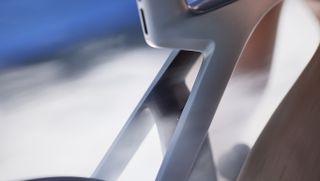
Trek found that the new IsoFlow seat tube design had a major impact on the new bike’s drag, directing a jet of fast moving air into the high drag area behind the rider and contributing around a third of the drag reduction for the whole system.
“The seat tube section is really important, because there’s a lot of turbulent flow,” says Alex Bedinghaus, senior design engineer for the Gen 7 Madone. “The Isoflow design can be used to accelerate the air around the head tube and into the low pressure zone behind the rider, making the rider and bike more aerodynamic and faster. The cantilevered seat tube really optimises for aerodynamics, weight and compliance.”
Trek has made other aero improvements, fine-tuning its Kammtail tube shapes and increased the height of the bottom bracket shelf, so that the airflow around water bottles was smoothed, which removed a significant amount of drag.
The Madone’s bar shape includes the new Kammtail shapes to improve aerodynamics. Trek also worked on the stem and spacer stack, which influence the aerodynamics of the rider, as they interact with the legs when pedalling.
Not just about the bike
Trek’s modelling showed that there were gains to be made in rider positioning, not from a change in geometry - the Gen 7 Madone retains Trek’s H1.5 rider geometry, which satisfies the pros but is comfortable enough for weekend riders - but from how widely spaced the hands were when riding on the tops.
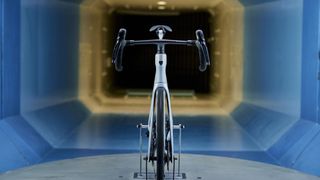
As well as being more aero itself, the new bar design for the Gen 7 Madone has a flare from the tops to the drops, so that although the drops have a width of between 380mm and 440mm, depending on frame size, the tops are 30mm narrower. That closer hand positioning saves an extra 9.5 watts, while the wider drops still help when sprinting and cornering.
One benefit of the Gen 7 Madone’s design is that you can also ride it with a conventional bar and stem or the bar-stem from the Emonda if you prefer, just by changing the bearing top cap. You’ll lose the 9.5 watts of aero benefits from the rider positioning though.
Lighter
Trek’s 300g weight reduction for the Gen 7 Madone came from looking at the whole bike.
“We get around half the weight savings from the frame, about half from the bar-stem combo,“ says Bedinghaus, with the replacement of the separate bar and stem of the previous bike.
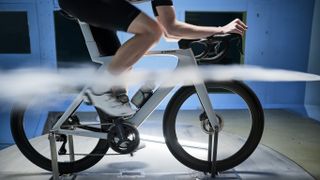
The carbon lay-up has also been improved with the latest OCLV 800 carbon fibre, making the bike lighter despite the deep tube cross-sections. The seat post design and new seatpost clamp also reduce weight. The clamp is flippable, giving more seatpost height adjustment than Trek’s previous design and there are long and short seatposts with zero and 20mm offset available.
Trek says that a top spec, Shimano Dura-Ace equipped, Madone SLR 9 weighs 7.1kg in size 54cm, while an entry-level spec size 56cm Madone SLR 6 weighs just 7.8kg.
Electronic only
The Gen 7 Madone is designed for electronic disc brake groupsets only. That’s not such a constraint as it used to be. With the launch of Shimano 105 Di2, the entry level Madone SLR 6 spec of the Gen 7 bike is a lot more affordable than the top spec models and even undercuts the price of the entry spec Gen 6 Madone SLR 6.
The Madone’s front derailleur hanger is removable, making one-by groupsets an option and delivering additional aerodynamic benefits. As with the previous Madone, Trek uses a T47 bottom bracket, so the frame is compatible with a wide range of chainsets.
Trek says that its maximum recommended size is 28mm tyres, with 6mm clearance all around. The Madone is compatible with Trek’s Blendr system, so you can add lights, a computer and other accessories for training rides.
Project One customisation
Like Trek’s other premium bikes, the Gen 7 Madone will in future be available in its Project One customisation programme, where you can choose between thousands of paint colours and designs and choose your own component spec, with your bike built to order.
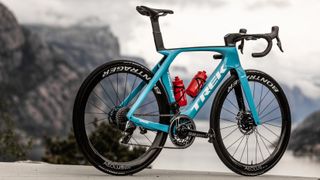
For even more amazing colour options, you can choose Project One Icon, while with Project One Ultimate you can travel to Trek’s HQ in Wisconsin and work directly with Trek’s designers and product experts to design your dream Madone.
You can pick up any Project One bike in person from Trek HQ, complete with a tour of Trek’s facilities, a pro bike fit and more.
The bottom line
The new Gen 7 Trek Madone uses clever engineering to up the game in aero bike design. Trek says that it’s tested the Madone against what it believes to be the most aero bikes from competing brands and that the Madone is faster by a relatively significant margin.
“This bike is superb,” concludes Trek-Segafredo’s Pederson. “It’s reacting like we want it, it’s really aggressive in the corners, it’s easy to handle. The lightness of the bike is also super, super important. It’s so fast when you start a sprint. It’s the perfect bike for a rider like me.”
“The Madone is really focussed on speed, so any rider who is motivated by going fast is going to really love the new bike,” Roessingh concludes.
Get The Leadout Newsletter
The latest race content, interviews, features, reviews and expert buying guides, direct to your inbox!
Paul has been on two wheels since he was in his teens and he's spent much of the time since writing about bikes and the associated tech. He's a road cyclist at heart but his adventurous curiosity means Paul has been riding gravel since well before it was cool, adapting his cyclo-cross bike to ride all-day off-road epics and putting road kit to the ultimate test along the way. Paul has contributed to Cyclingnews' tech coverage for a few years, helping to maintain the freshness of our buying guides and deals content, as well as writing a number of our voucher code pages.